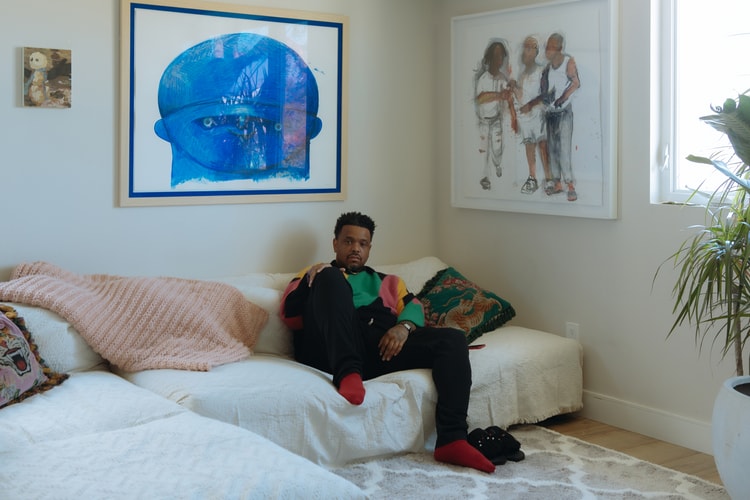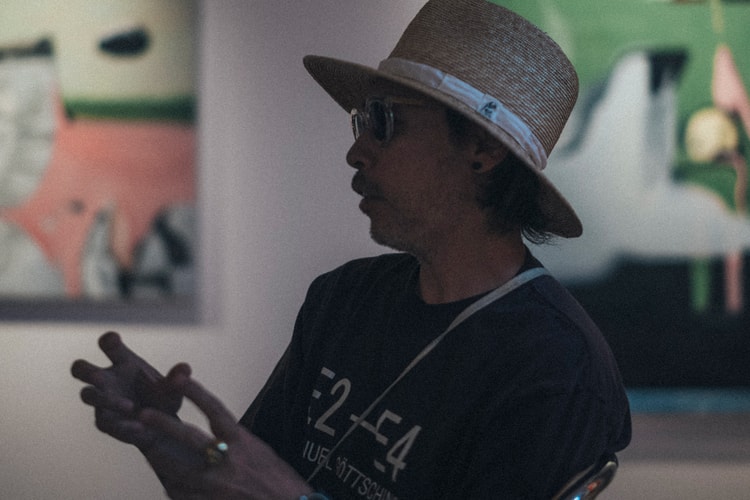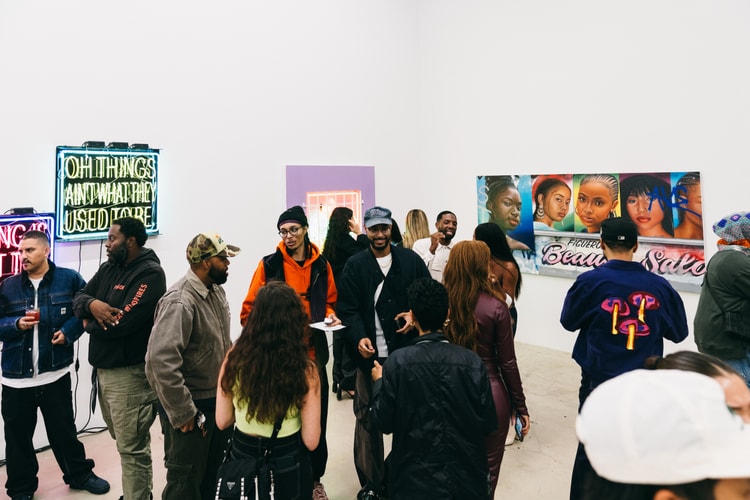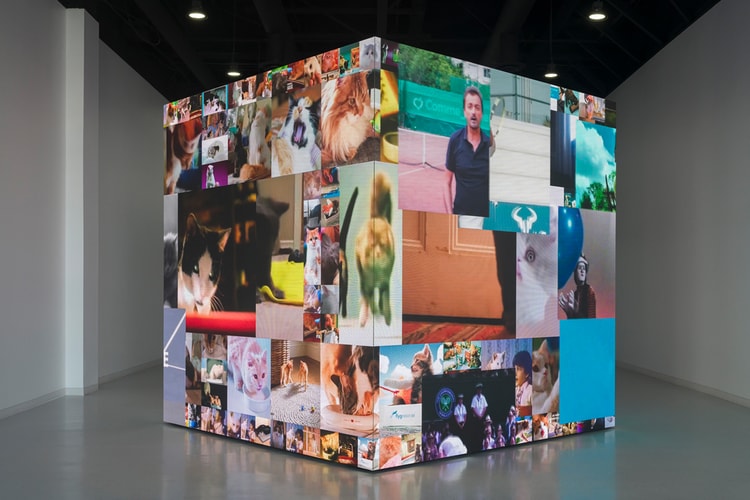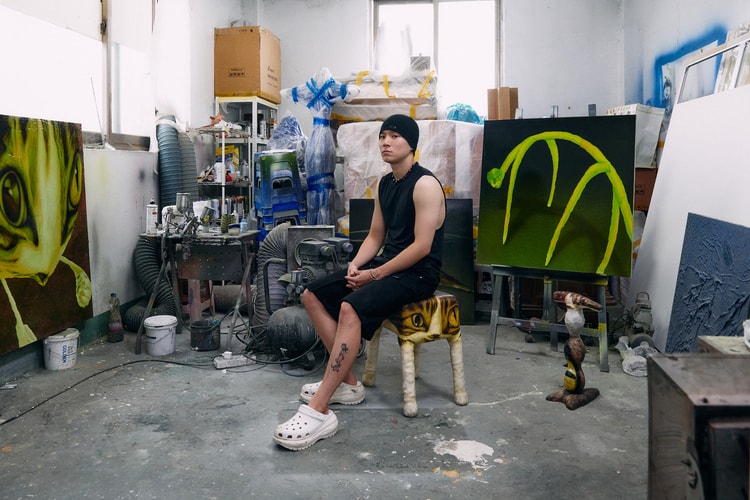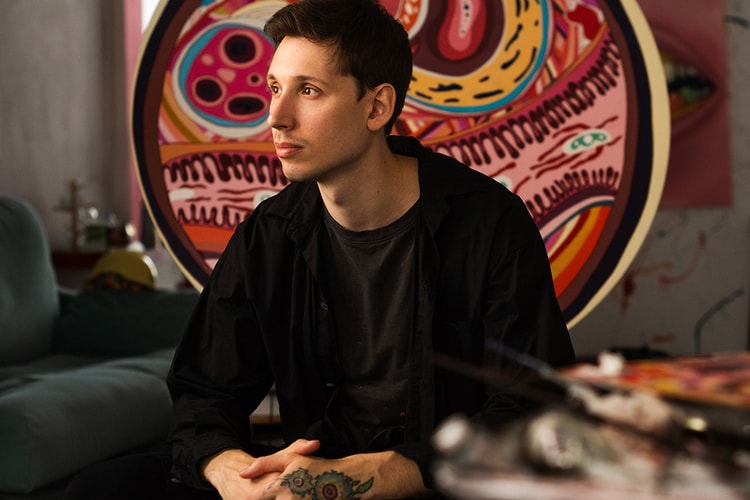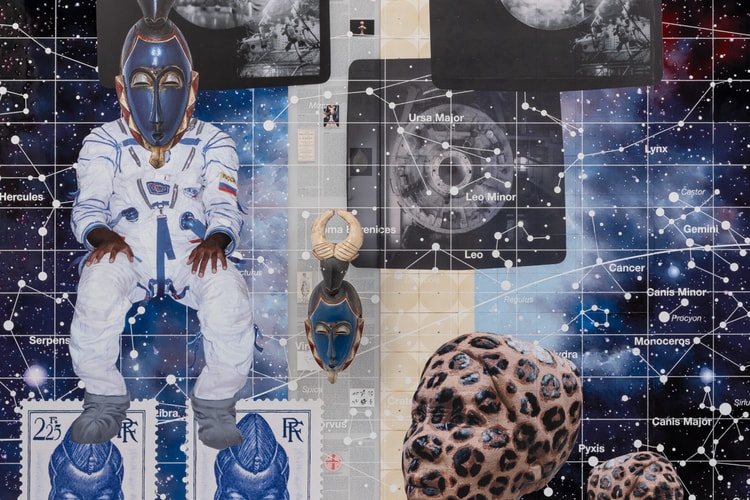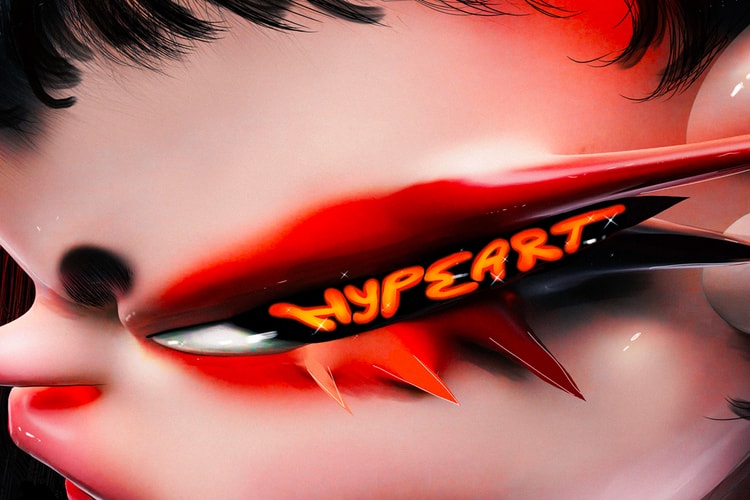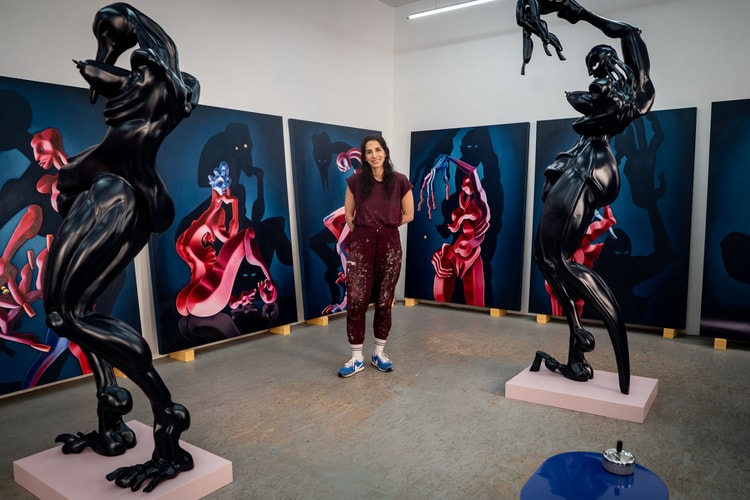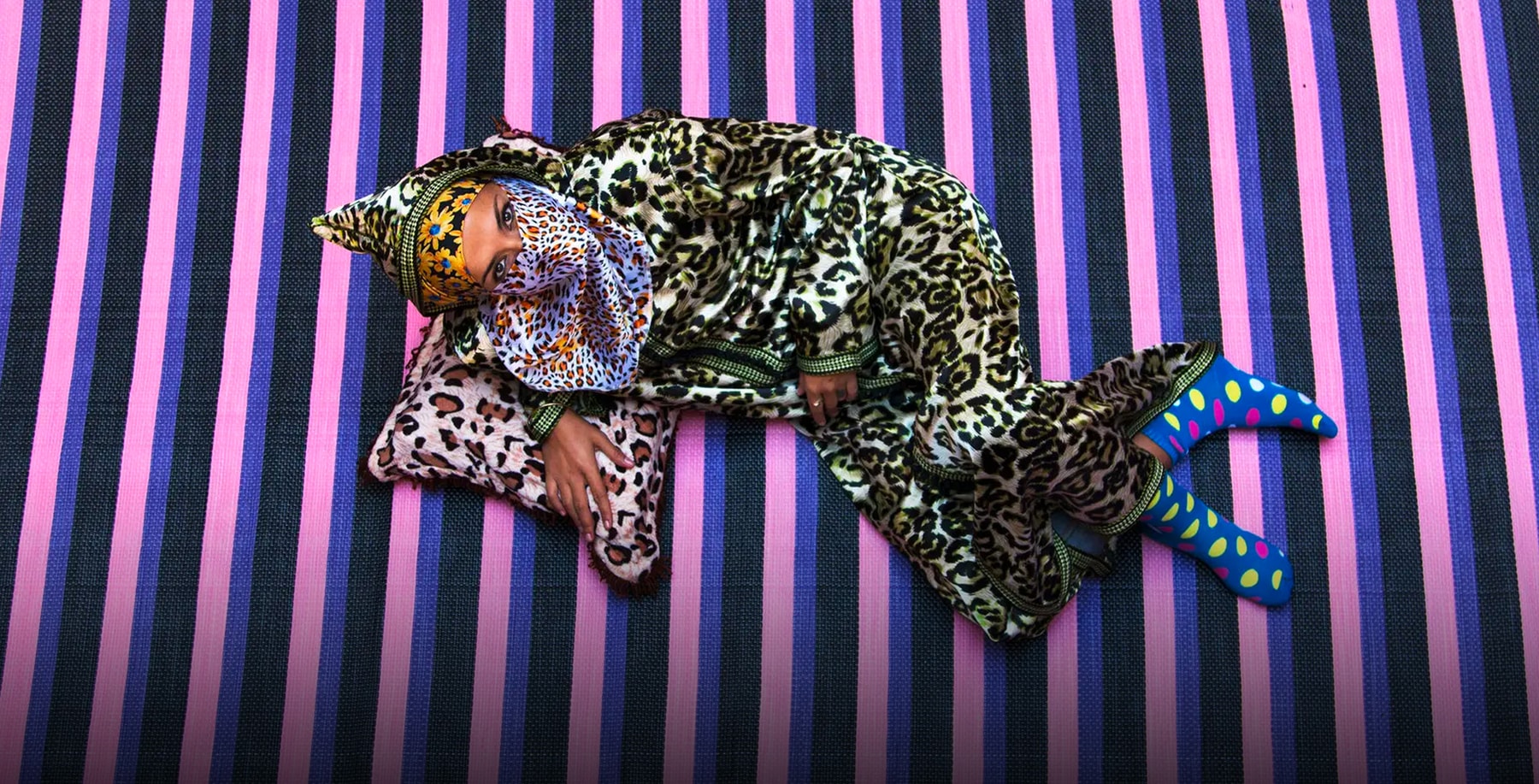

Home has always been a nebulous concept for Moroccan artist, Hassan Hajjaj. Born in 1961 in the fishing town of Larache, Hajjaj and his parents moved to London when he was 13 as a way for his father to find steady work. Like many immigrant children growing up in the West, the jarring cultural differences between the two regions have always left a persistent feeling of ‘otherness’ in him when he reflects on his identity. “There’s a bit of a complex,” Hajjaj tells us, “you become a misfit in both places.”
Subconsciously informed by his upbringing, Hajajj’s graphically-charged photographs conjure a feeling of familiarity and mystery — sparking new dialogues between North Africa and the West, high and lowbrow fashion, as well as blurring the line between reality and fantasy. The subjects in his work oscillate from close friends within the Arab-speaking world, as well as high profile celebrities that have included Billie Eilish, Cardi B and the Wu-Tang Clan. Entirely self taught, Hajjaj composes his images in maximalist settings consisting of Moroccan textiles and models donning counterfeit designer clothing on traditional North African garments that are meant to parody the “Orientalist” gaze found in Western fashion publications. “I always play on that difference,” he muses.
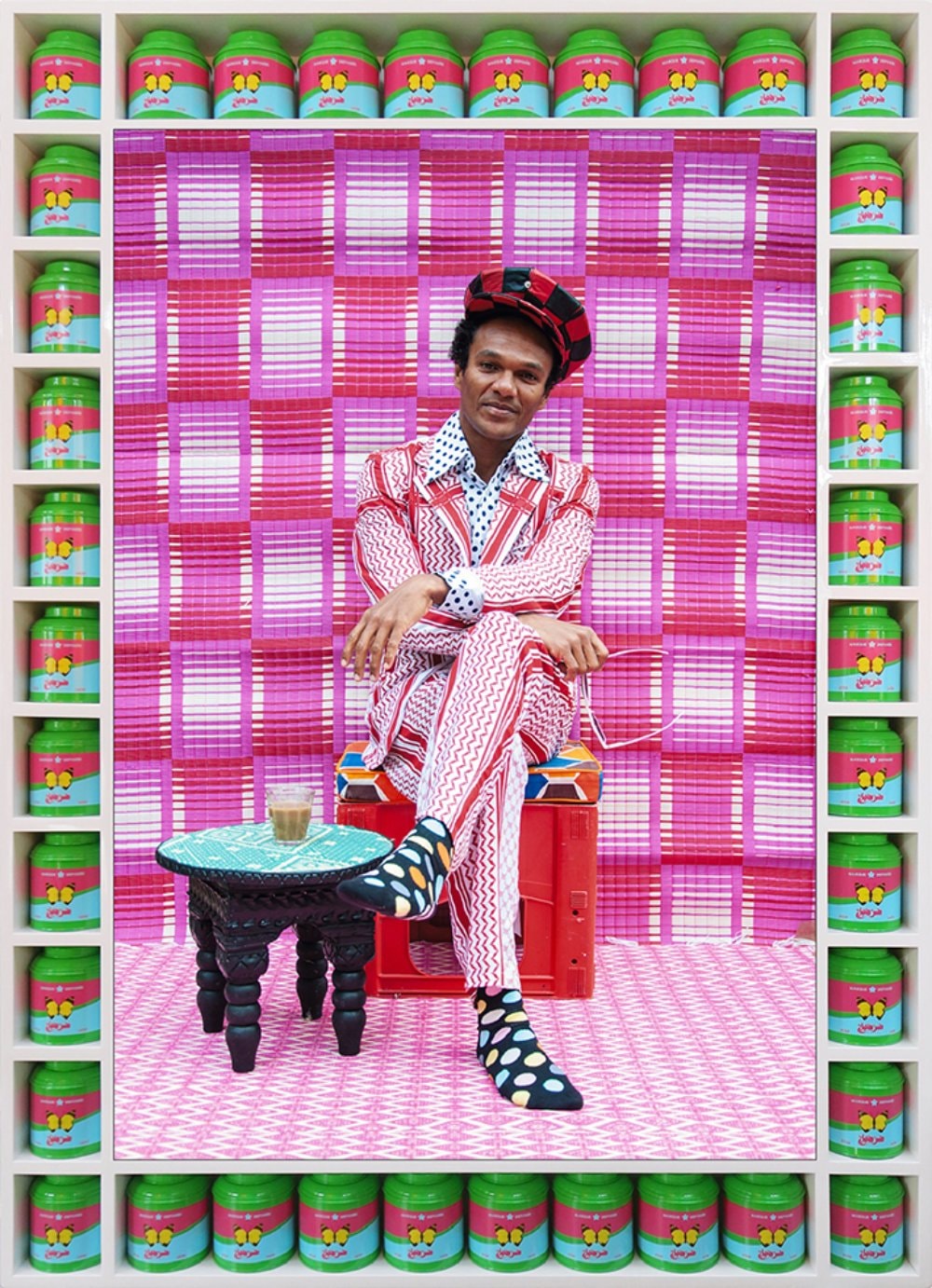
“Those brands weren’t designed for us in the ‘80s.”
Known in some circles as the “Andy Warhol of Marrakech”, Hajjaj’s photographs are in the collection of numerous institutions across the world, including the Brooklyn Museum, Guggenheim Abu Dhabi, and the Victoria and Albert Museum. He is also a mainstay within the fashion and streetwear world, recently partnering with Patta for a capsule collection, and photographing dozens of household names along the way.
Hypeart traveled to the ochre-laden town of Ouarzazate, located roughly three hours southeast of Marrakech, to speak with the pioneering artist at the latest Oasis music festival. Housed in a pop-up iteration of his Jajjah concept store — made popular in Marrakech as a meeting point for the artistically-inclined — we discussed the origins of his practice and the growing international appeal surrounding Morocco’s contemporary art scene. Like his images, the space we spoke in was designed with end-to-end geometric wallpaper, aesthetically referencing textile patterns found in local alleyways, as well as showcasing unassuming crates, produce, and canned goods you would find in one of the nation’s ancient souks.

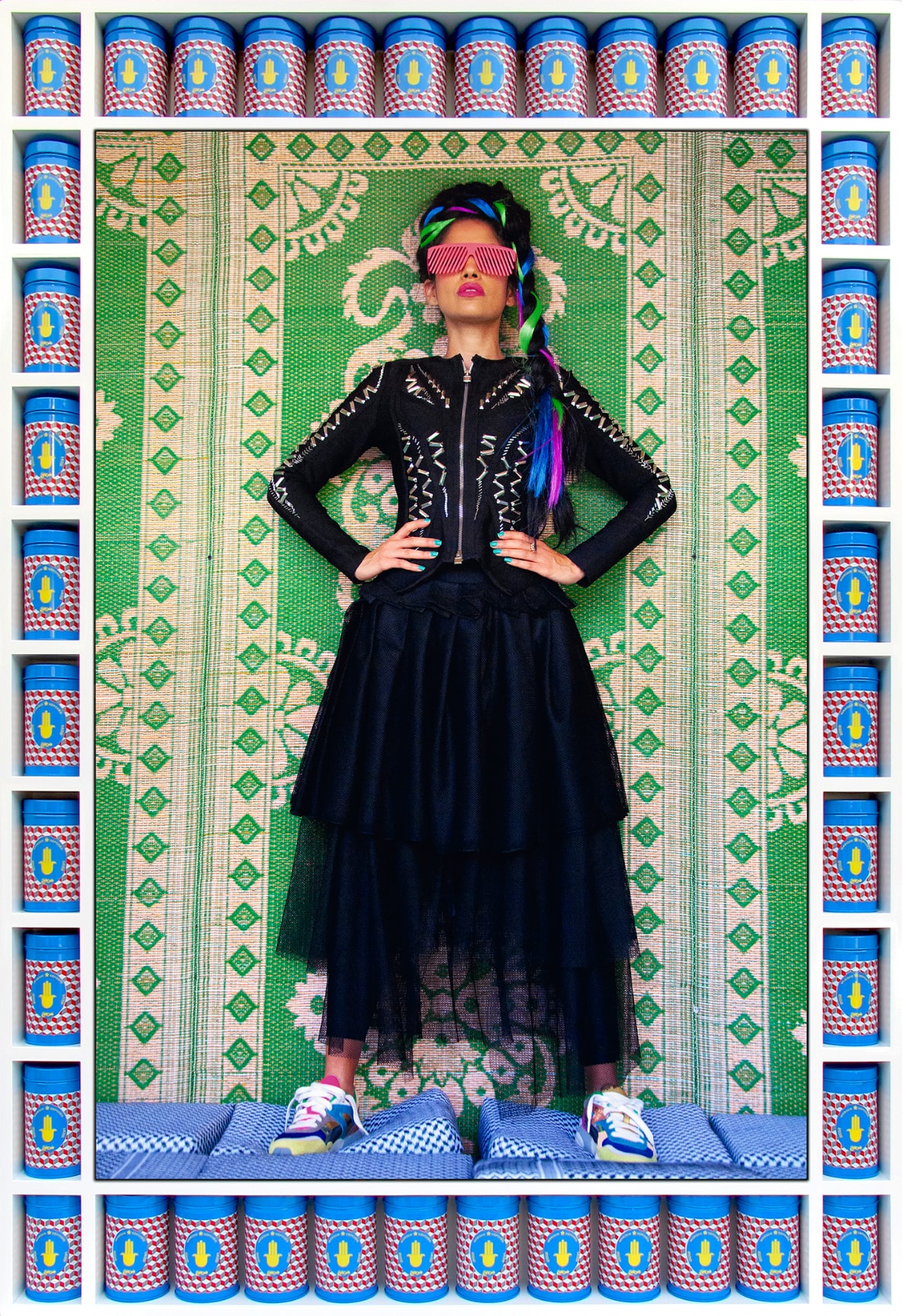
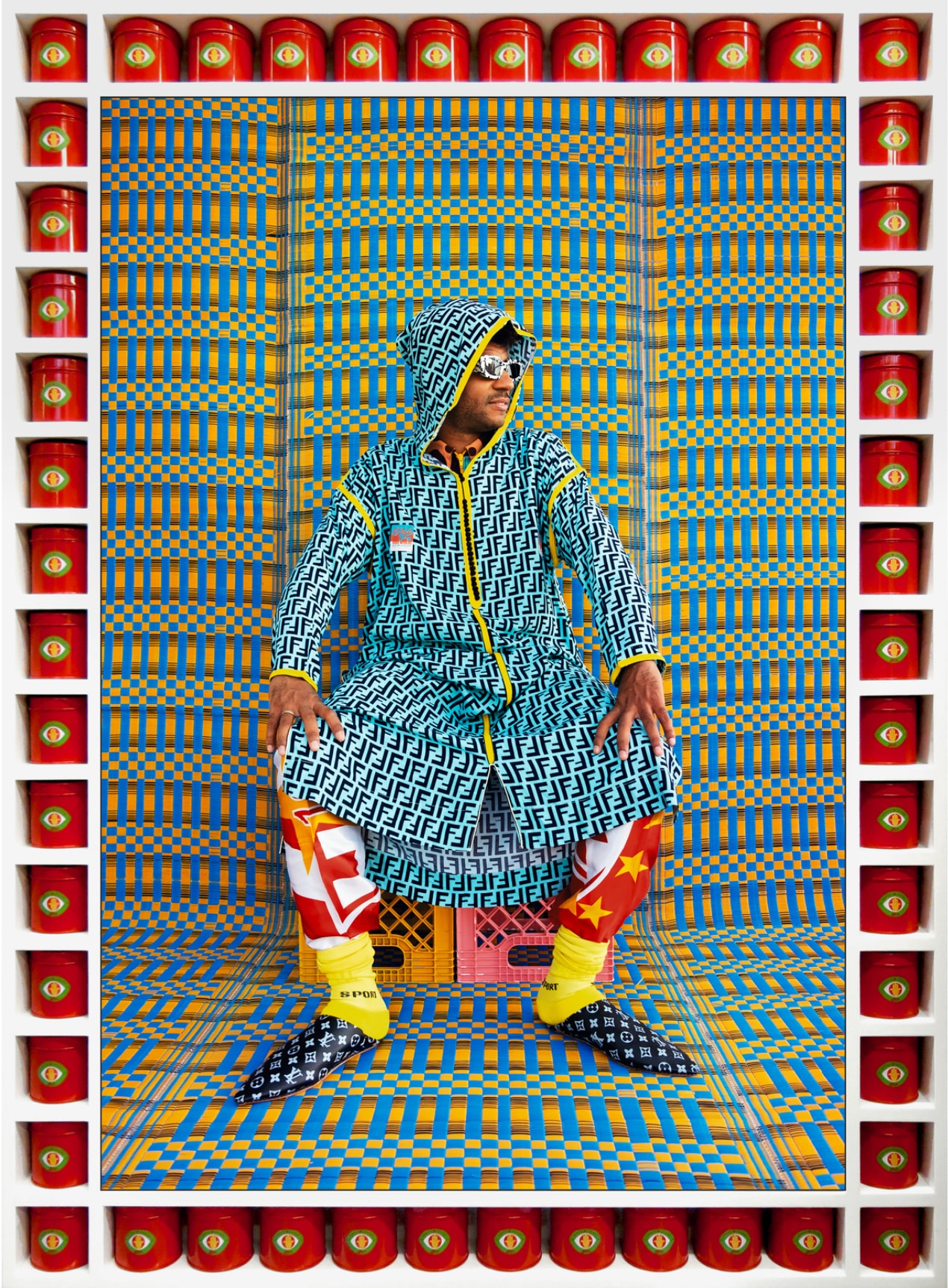
Compositionally, Hajjaj’s portraiture veers between a hip hop album cover and a hyper-realistic carpet. Prominently in the center, his subjects are veiled in traditional Arab and North African attire, appearing flattened against the pattern of a local textile and bordered by three-dimensional products that spotlight the visual lexicon of daily Moroccan commerce. Oscillating from theme to theme, there is something enticing and disorienting simultaneously when viewing his photos. “With great humor,” writes curator Michket Krifa, “they vilify the picturesque perceptions of an “elsewhere” — which really no longer exists in our globalized world — and the mercantile cynicism that ascribes the highest value to the ostentatious visibility of logos.”
To understand the clashing symbolism in Hajjaj’s practice, one must go back to his coming of age. Hajjaj grew up during Britain’s Thatcher years, an 11-year period marred by incendiary remarks towards migrants and whose conservative neoliberal policies severely underfunded the creative community within the UK — which as chance would have it, paradoxically led to an explosion of counter-cultural art movements, such as the underground hip hop and electronic scenes that he was firmly a part of. Hajjaj dropped out of school early to start his own shop called R.A.P. (Real Artistic People) in 1984, where for seven years he sold bootleg tees of various luxury brands like Chanel and Gucci. “Those brands weren’t designed for us in the ‘80s,” Hajjaj reflects, “but we wanted to be a part of them, so we had to recreate it.”
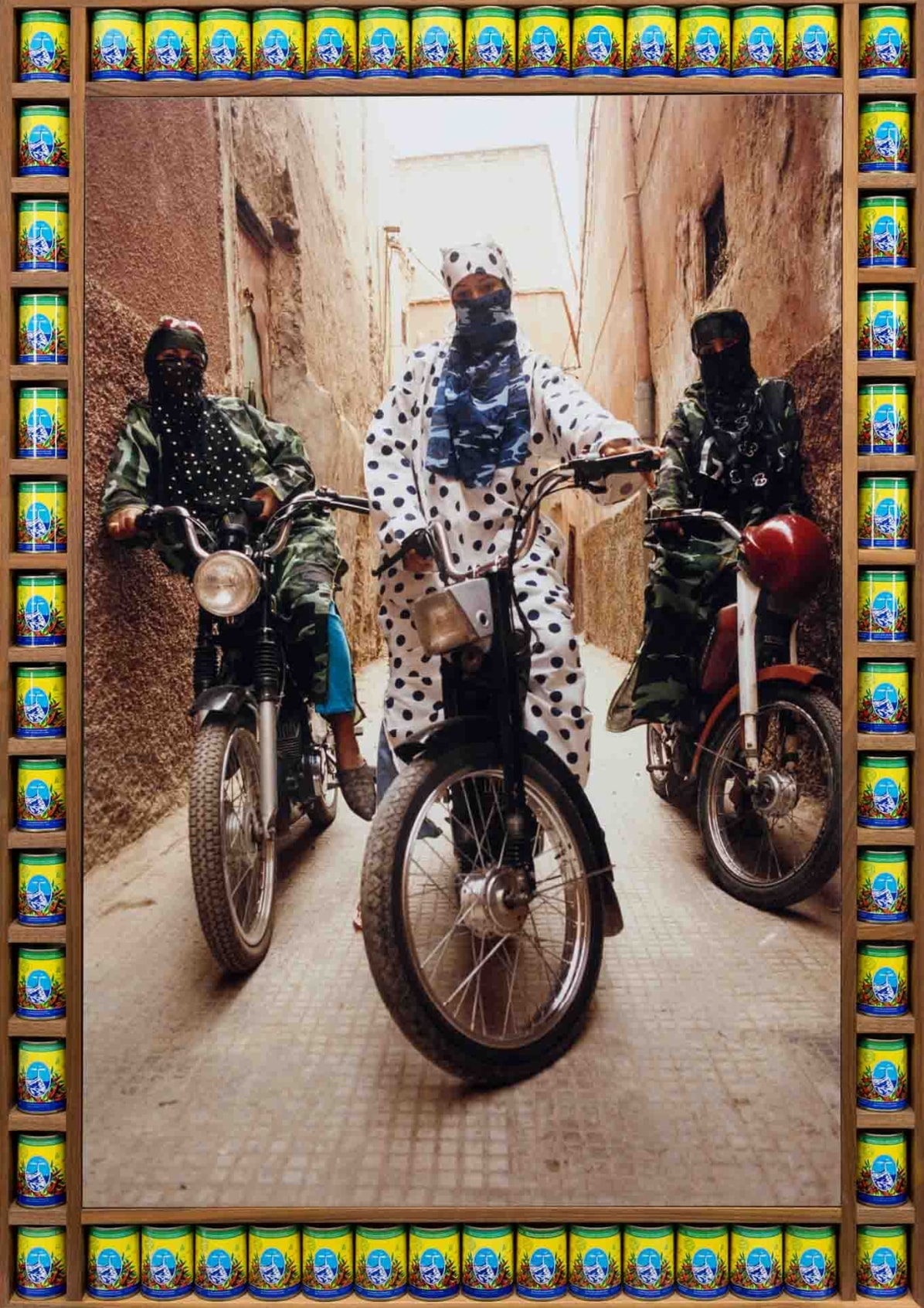
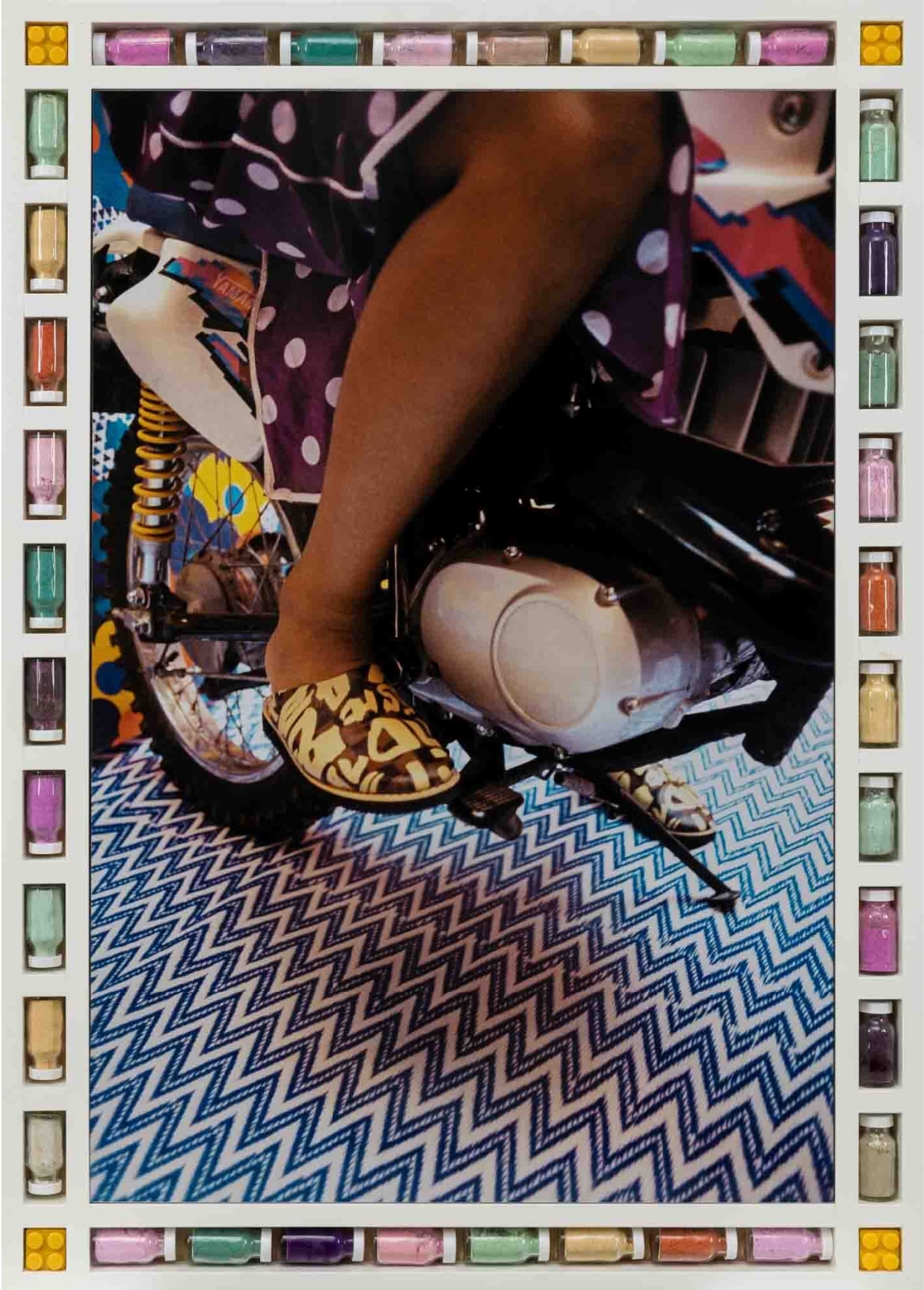
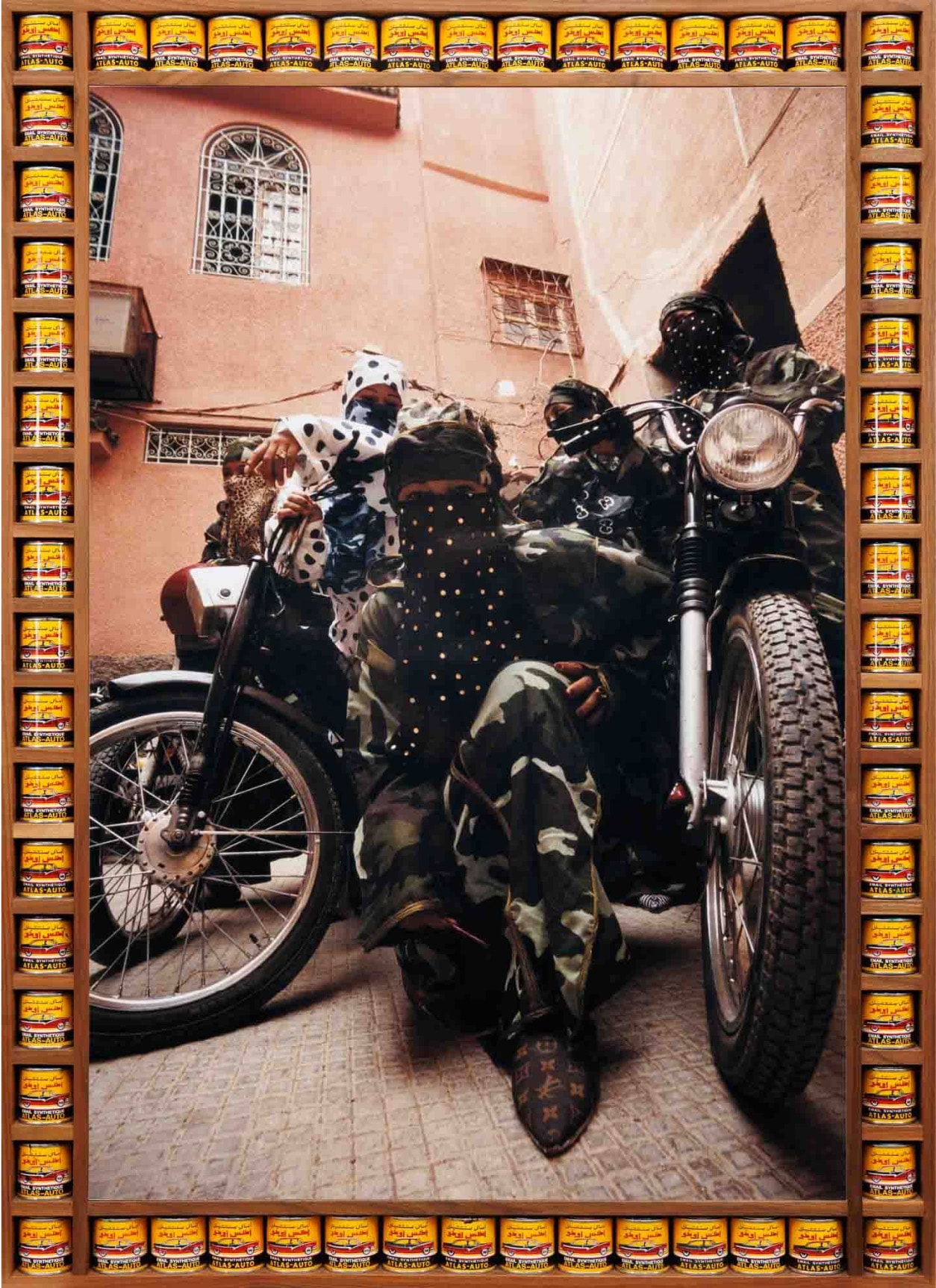
“That’s when your human nature comes alive.”
Long before the category was coined, R.A.P. served as a precursor to streetwear shops today. Part storefront, cafe, event space, and gallery, he drew in many artistic contemporaries of the day, eventually learning his way around using a camera, but struggled to find his own stylistic voice early on. “I was too embarrassed to say, ‘I’m a photographer.” It wasn’t until he traveled more frequently from London to Marrakech, that he began to see different perspectives to his ethnic heritage. “London gave me a different point of view to see my country in how Europe and the West would see it. So I played on that and it was a really long journey to get to that point.”
Niqabs and hijabs are stereotypically associated with notions of repression and gender discrimination in the West. But in Hajjaj’s portraiture, his veiled female figures exude a hip hop swagger that questions the political censorship Muslim women currently face in countries like France, which recently made it illegal for children to wear abayas in the classroom. Drawing from Marrakech’s female biker culture, his “Kesh Angels” series dispel “any idea of submission,” noted Krifa, “their motorcycles symbolize their independence and emancipation, and their hijabs and niqabs stand as emblems of their femininity, just as the leather jackets and other accessories of Western biker gangs convey ideas of freedom.”
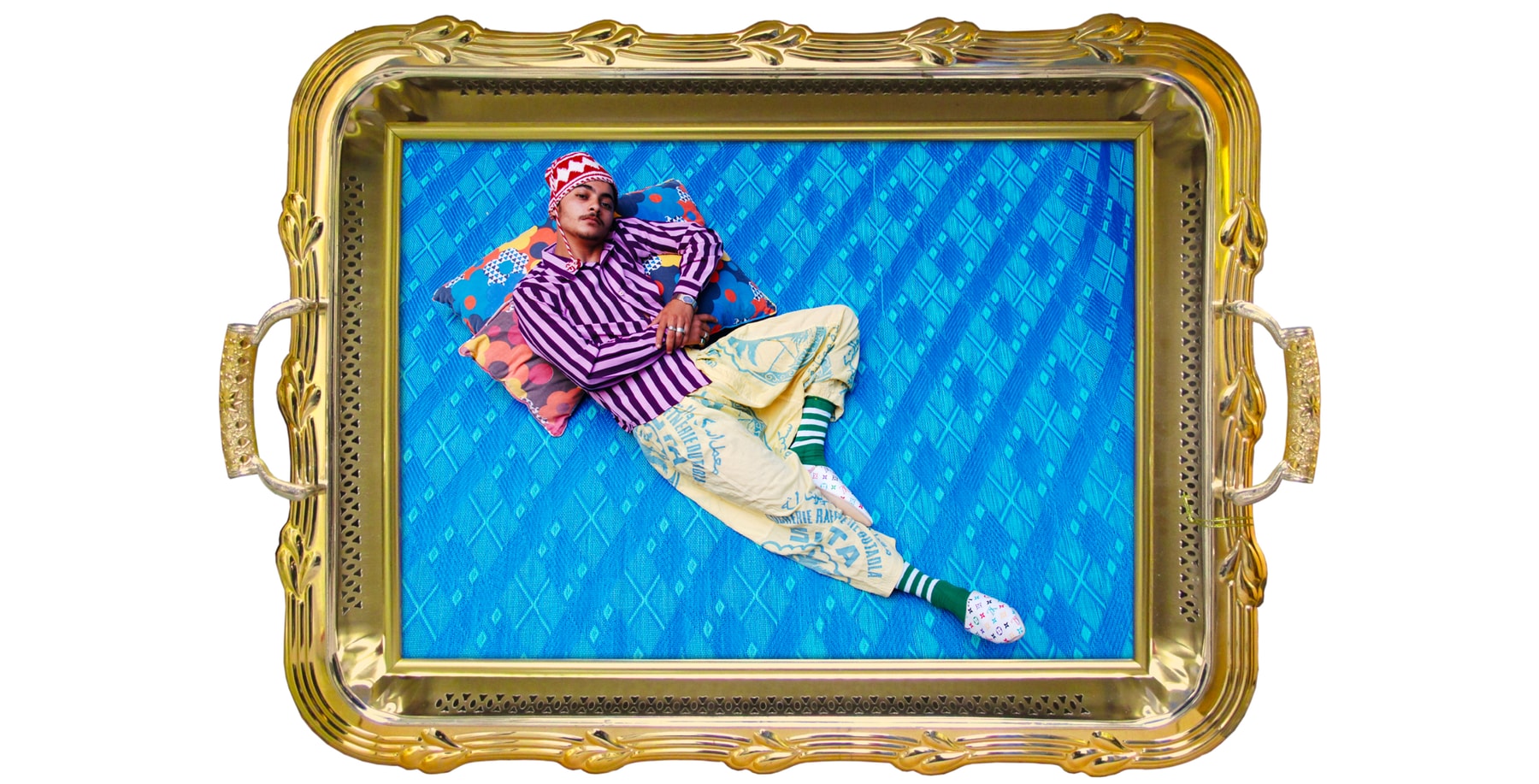
But even past the social, cultural, and political underpinnings of Hajjaj’s work, his photographs are simply beautiful to look at — a reframing of North Africa and the Middle East in all its liveliness rather than the constant state of turmoil that is projected in Western media outlets. Just as poignantly, Hajjaj’s art also recently served to help thousands in need following Morocco’s devastating 6.8 earthquake, which took the lives of nearly 3,000 people on September 8. “It was a moment that you’re never going to forget,” he remembers. “That’s when your human nature comes alive. You use your heart, instead of your head.” In the days following the disaster, Hajjaj, alongside a number of figures in the Moroccan diaspora, including Mous Lamrabat and Meriem Bennani, started a charity sale that raised over €250,000 EUR.
“That’s when you start thinking, ‘Art can affect something, in a sense as a human,” Hajjaj added. “As an artist, you can affect a person, can affect some debate, can affect somebody to like it or not — which is good. But does it really make a change? To me, this was a moment where it really made a change to help people.”
Despite being a superstar in today’s contemporary art scene, Hajjaj is supremely humble, never forgetting his roots, but maintaining the belief that home is constantly shifting, because as people and societies, we too are constantly in a state of flux. In this way, he is what British-Ghanaian philosopher Kwame Anthony Appiah describes as a “cosmopolitan patriot” — one that “can entertain the possibility of a world in which everyone is a rooted cosmopolitan, attached to a home of his or her own, with its own cultural particularities, but taking pleasure from the presence of other, different places that are home to other, different people.”
All photos courtesy of Hassan Hajjaj for Hypeart.



